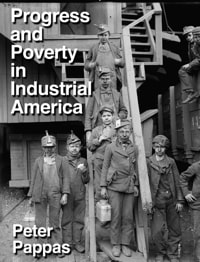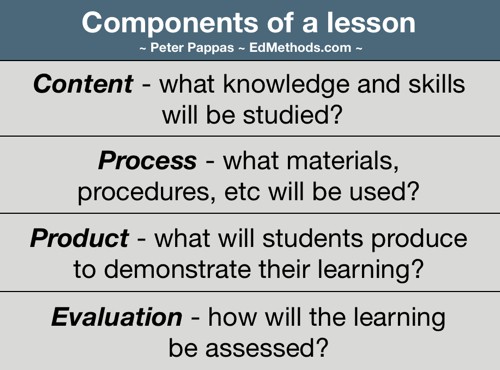Our third class is comprised of three segments:
- Task 1. I’ll be showing you a sample lesson I created as an interactive iBook. “Progress and Poverty in Industrial America.” Free at iTunes. I want to demonstrate how I used the lesson study to plan the book and introduce you to what you can create with iBooks author. (I have a cart of iPads coming in).
- Task 2: Give you time to use your lesson study to offer each other feedback on an upcoming lesson you will teach in your placement. See Lesson Study Assignment (41 KB pdf) given out at Class 2
- Task 3. Get you set up on WordPress – your assignment this week takes the form of a blog post.
To see students’ reflections on Lesson Study click Lesson Study 1 Category
Here’s a sample “Lesson Study” based on my iBook “Progress and Poverty in Industrial America.”
Content – I have three goals for this iBook lesson:
- To study the industrial era of late 19th century US Use an essential question (EQ) that is still relevant to students: “How do we evaluate the social costs and benefits of technological innovations?”
- I want students to think about the impact of contemporary technological changes on peoples’ lives.
- Guide students through the historian’s process with Common Core style prompts
 Process – I begin by posing the essential question (then to make the question relevant to students) I offer a brief examination of the impact of 21st c technologies / global economy on progress and poverty in contemporary America. I’ve gathered a short collection of historic documents – some text, but also photographs, posters and an early Edison film. Instead of explaining the documents to the students, I have minimal explanation, with short guiding questions to help the students think about the documents and ultimately the essential question.
Process – I begin by posing the essential question (then to make the question relevant to students) I offer a brief examination of the impact of 21st c technologies / global economy on progress and poverty in contemporary America. I’ve gathered a short collection of historic documents – some text, but also photographs, posters and an early Edison film. Instead of explaining the documents to the students, I have minimal explanation, with short guiding questions to help the students think about the documents and ultimately the essential question.
Product – I left this rather open ended since I published it on iTunes and I don’t intend to be there to deliver the lesson. But in the introduction, I do include a series of possible activities that teachers might utilize.
Evaluation – I did not include a formal assessment in this iBook. (If used by a teacher, I’ll let them figure it out). But at the reader level I do have a series of reflective questions for students related to content goals (the late 19th c industrialization, essential question, and process of historical thinking.)
What kinds of thinking will students need to do to participate in the lesson? For the most part its all higher level thinking (analysis and evaluation) I have many documents with opposing viewpoints on the impact of industrialization. The guiding questions ask student to compare (analysis) and evaluate.
To what extent do students have options or choices regarding these lesson components? I choose all the content. No student choice there. While I offer suggestions for how to look at the documents, there is no specific process or product. So there is a chance for student input. The material lends itself to a debate format, though students might simply use the content to form their own opinions about the EQ. That’s their own personal “evaluation “ of the question.

